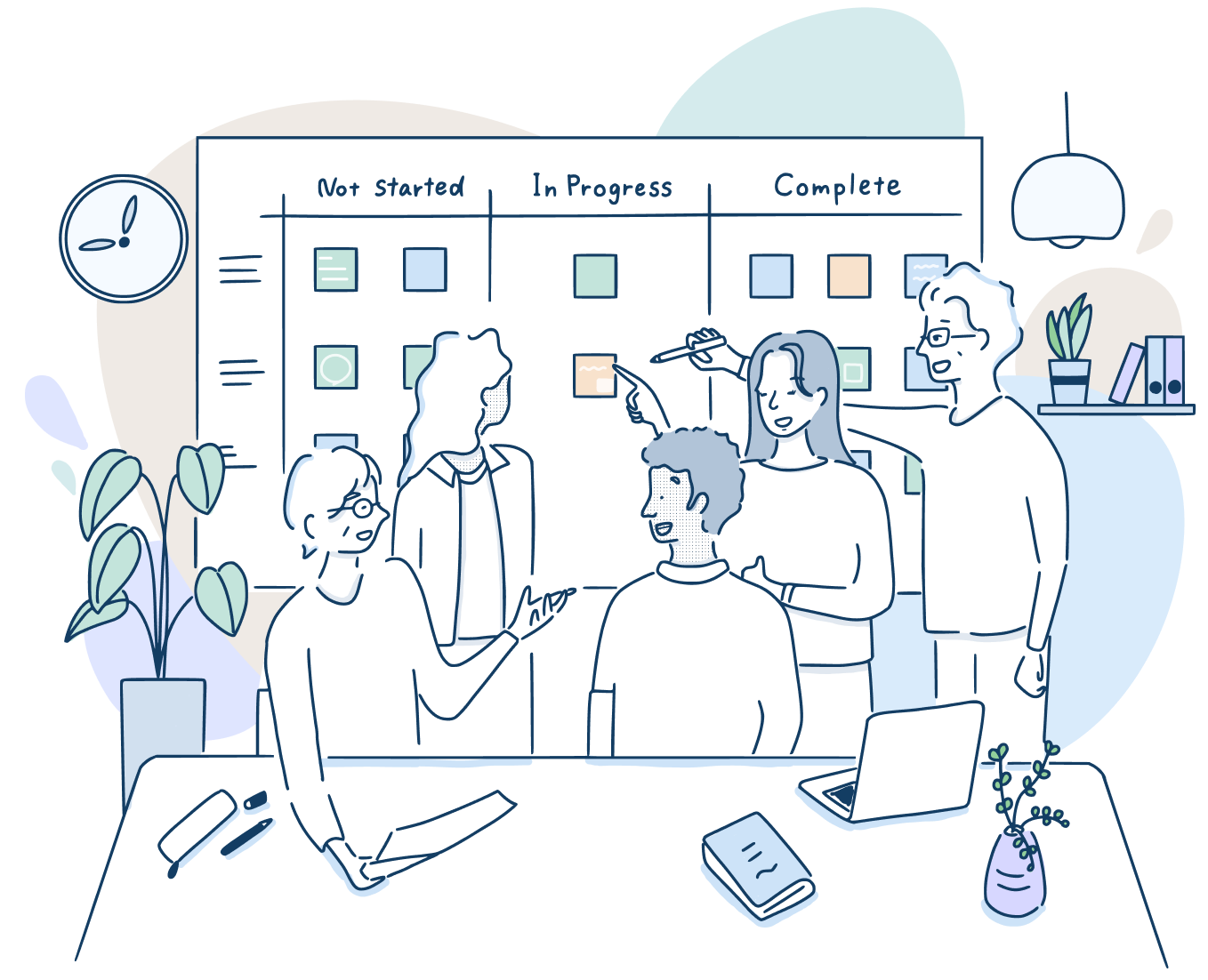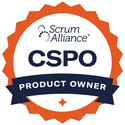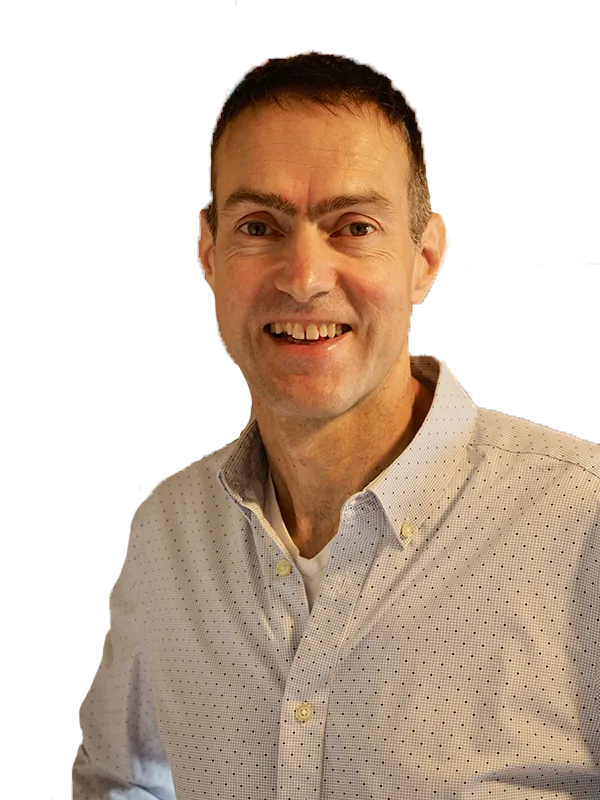Become a Certified Scrum Product Owner (CSPO)
Learn how to use the Scrum framework to translate your customer’s ideas into a clear vision that inspires your product team to build the right feature the first time, with better quality, and deliver products sooner, so there is less risk and greater return.

Course Level
The first step in the Scrum Product Owner Track. Focuses on Product Ownership and the role of the Product Owner.
Prerequisites
None. Just an open mind and willingness to learn and have fun in a safe and supportive place.
No Powerpoint
Unique, hands-on approach to learning. Experience what it’s really like to do Scrum, without boring lectures.

Upcoming Workshops
Deepen your understanding of this Scrum role from someone who will help well beyond the initial course, when you have “yes, but in real life…” questions. Don’t settle and pay for fast food Scrum courses when becoming a Certified Scrum Product Owner. Invest in healthy, full-meal training, with take-home recipes for success and ongoing support during and after the certification course.
Build the product your customer needs without burning out your team
High Value Learning
For people who want to build, manage, and maintain an effective product backlog, and/or work with the Product Owner to do so (ScrumMasters, Business Analysts, etc.)
Relatable Scenarios
Learn practical solutions that you can apply the next day for difficult, real-life scenarios (e.g. how to say “no” to stakeholders and stop inflicting a feature factory on your team).
Effective Strategy
Fixing product management problems isn’t easy. You’ll get an evidence-based plan that isn’t wild promises, to help you confidently find your path through the mess.
Hands-On Practice
You don’t need boring PowerPoint and lectures. Experience building, managing, and maintaining an effective product backlog to deliver a useable product every sprint.
Fact-based, Safe, Fun
Explore ways to anticipate challenges and have a plan for how to deal with them. Grounded on case studies and evidence, not opinions or guesswork.
Ongoing Education, Free
Certification fees plus two years of Scrum Alliance membership are included, plus an abundance of post-workshop resources and support.
What our students say
"Came back to take my CSPO specifically with Mark for a reason. Amazing instructor." ..."Whether you have 0 days or 10 years of product owner experience you’re guaranted to learn a lot from this course." ... "I can’t say enough good things about the practical knowledge I’ve gained taking this training." ... "You’ll spend two great days with amazing people around and learn a lot while laughing. Take this course!"
Get exclusive bonuses with our Scrum Alliance Certified Scrum training
Future-proof blueprint
A practical plan for Scrum team success, to guide you through your first few months after class and help you be effective long-term.
Personal coaching
Get professional input on the unique issues you’re facing at your organization in a coaching session with Mark after training.
Resources
When you’re confused about Scrum or Agile, you can access reputable information, including a Glossary and Resource Library.
Community access
A safe online space to ask questions and get experienced answers when you run into challenges with Scrum and Agile.
Lean Coffee
Fun and friendly virtual meet-ups to discuss Scrum and Agile. Hear from Mark and others what has and hasn’t worked for them.
Money-back guarantee
You’ll gain valuable skills and learning from our certification workshops, or we’ll refund your registration price.
Your Guide to Everything Scrum
Mark Levison spent 12 years as a ScrumMaster and Coach, helping teams by chance before he started to systemize it. Armed with an insatiable love for research, he has been studying and teaching Agile since 2001, introducing Scrum, Lean, and Agile methodology to a broad range of individuals and organizations. Mark has helped launch Scrum practice throughout Canada including Government of Canada departments, major financial and insurance institutions, healthcare agencies, and leading payroll, HR services, and software companies.
Students and communities benefit from Mark’s more than thirty years of experience in the IT industry and over two decades of Scrum and Agile expertise, as he brings his uniquely fun and effective teaching style to thousands of individuals and teams so they can be more effective.
Frequently asked questions
You can be a Scrum Product Owner without any training, sadly to say. It’s a tough position to throw anyone into without support and resources, but it’s not an uncommon occurrence. Many of our CSPO students came to us for professional Scrum Product Owner training because they had no idea what was expected of them or how to do a good job with their project and teams.
To be a Certified Scrum Product Owner® and obtain your CSPO certificate, the Scrum Alliance requires that you attend and participate in at least 14 hours of CSPO training delivered by a Certified Scrum Trainer. The CSPO training can be in an online virtual classroom or an in-person course.
None of that, including CSPO certification, guarantees that you’ll be an effective Scrum Product Owner, which should be the goal far more than just holding the title. That’s why we believe in going above and beyond so the Scrum Product Owner training course isn’t just a one-time thing. With Agile Pain Relief, after the class you get included follow-up support and resources, and access to a whole professional community who help take you beyond merely being assigned a job and getting a certificate. We invest and provide continual learning so you can be effective and excel in your Scrum Product Owner position.
No. While Scrum is used primarily in the world of software development, it’s also used successfully in many industries outside of that, including education, healthcare, and aviation, to name a few. Even in software, the Scrum Product Owner does not have to be a programmer/developer. The CSPO role is to help the team know what excellent product to build, not build it for them. Being a Scrum Product Owner requires leadership skills and the ability to support teams on product development.
The Product Owner never lives the same day twice. Where the Certified Scrum Master focuses on taking a team beyond critical Scrum and Agile foundations and principles, and coaching them to build the best Scrum team, Certified Scrum Product Owners focus on working with teams to build and deliver the best products possible. Some days the CSPO spends most of the day working directly with customers, end users and other stakeholders understanding what the latest product needs are. Other days they spend their day with the Scrum Development Team sharing the knowledge of what they’ve recently learned from the customers. In terms of formal Scrum events, they’re responsible for Refining the Product Backlog. That includes deleting old items from the Product Backlog, reprioritizing, and finding new items. A couple of times every Sprint they meet with the rest of their team to conduct the Product Backlog Refinement event. In the event, a CSPO might summarize recent changes in priority (or old items deleted). A CSPO will also work with the team to understand new items, and answer questions in story splitting and estimation. And a CSPO might meet with team members to be shown the current version of features and provide feedback.
Many assume that SCRUM is an acronym for something, but it’s not. You may have heard the term “scrum” before in reference to rugby, where it refers to a formation of players. A team that works together to move a ball toward a common goal. Don’t overthink it. The analogy works because of the simplicity of it in both contexts.
Say “yes” to every product feature request. Micromanage. Assign. Blame. Reward. Instruct. The list goes on. But perhaps one that will surprise many people is that a Product Owner should not tell the team what products to build. Instead, the Scrum Product Owner should help their team understand the vision for the products or projects, and let them decide how best to bring it to life. Subtle difference, but critically important when acting as Scrum Product Owner. Live and online virtual training can help you gain the knowledge, skills, and certificate necessary to be a successful Scrum Product Owner.
Scrum was invented by the people who created the Scrum Alliance. The Scrum Guide defines the role of the Product Owner as being the person who has ultimate decision-making authority over the product they’re building. SAFe takes away most of the product owner’s responsibility. Instead of owning the product and working to delight customers, a SAFe Product Owner is left to serve up warmed up User Stories to an unwitting development team.
To maintain your Scrum Alliance® certifications, you are required to earn Scrum Education Units (SEUs) by completing educational training or learning opportunities. It’s easy to do and will help you stay relevant (and competitive) in the market. One hour of activity = 1 SEU. Any initial certification training does not qualify for SEUs, however if you take the same training again, it could.
There are many opportunities for earning SEUs that don’t cost money, and don’t require special courses.
We are happy to offer several free resources that qualify for SEUs, including:
-
The Guide to Effective Agile Retrospectives This eBook and accompanying email series help you take Retrospectives from groans to grins. You could reasonably claim 2 hours of reading the book, and 10 hours of taking action with the email exercises. Free with newsletter subscription.
-
Our Lean Coffee Events Hang out online and have a virtual coffee with CST Mark Levison. Bring your Scrum questions and challenges. A great opportunity to meet and interact with Mark, even if you haven’t attended his training yet. Free for newsletter subscribers.
-
Notes from a Tool User Reading blog posts counts too! We have a wide variety including posts featuring a fictional new Scrum team and all the mishaps they face, features on Anti-Patterns, and how to be successful beyond the basic Scrum framework
Find these and more free resources here.
For more detailed information about Scrum Education Units, visit the Scrum Alliance® SEU information page, or contact us with your questions – we’d be happy to help!
Upcoming Workshops
Deepen your understanding of this Scrum role from someone who will help well beyond the initial course, when you have “yes, but in real life…” questions. Don’t settle and pay for fast food Scrum courses when becoming a Certified Scrum Product Owner. Invest in healthy, full-meal training, with take-home recipes for success and ongoing support during and after the certification course.
